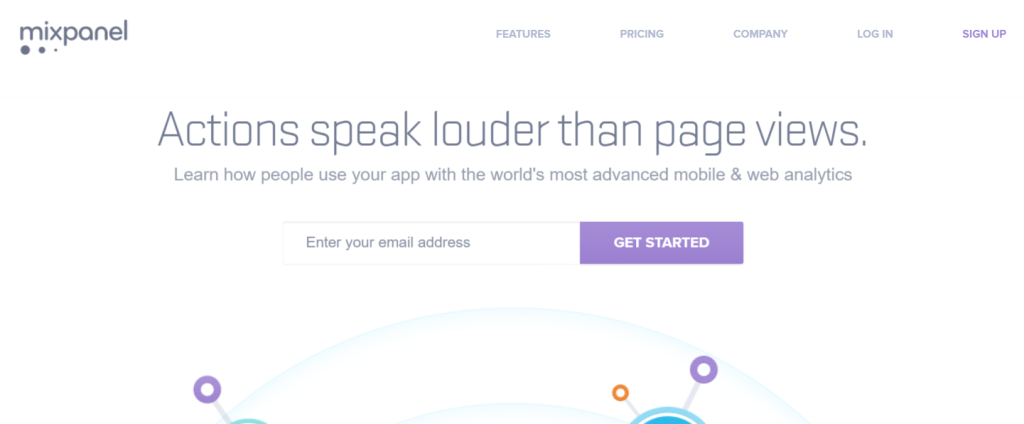If you run a small business, low traffic website, or are a start-up you need to read on to find out how to get top notch analytics for free by using Segment and Mixpanel.

Break the Google anonymous data barrier!
Every business needs to invest in a business intelligence and analytics platform which breaks the anonymous data barrier enforced in Google Analytics. Bootstrapping, not having money, or being too small to be able to afford it is no longer an excuse. Two of the market leaders have free subscription levels allowing you to build world class Business Intelligence for free.
What am I even talking about!?
The anonymous data barrier is the inability to match page-views and activities on your website to a real user or person who’s details you’ve previously collected. All of your Google Analytics is anonymous and you’re banned from doing anything which might allow you to identify a single user. You must rely on the unreliable Audience data in Google Analytics to segment your customers and understand how each segment behaves. This isn’t ideal as we’d prefer to really know and understand our users and their behaviour. By using other analytics tools such as Mixpanel we’re able to identify users and truly know who is doing what.
Pro Tip: You can only personally track users who have identified themselves in a way you can track. Such as a registration, login, contact form, or newsletter subscription.
Why do you need this?
- Learn who your customers are so you can create customer segments and base business decisions on real people.
- Track all the important actions on your website (or anywhere else for that matter).
- Calculate and Increase Life Time Value of customers.
- KNOW what factors contribute to revenue, life time value, and where the best customers come from.
- Optimise your website to increase business performance.
- Retain customers.
- Increase per customer revenue.
Step One - Segment, the customer data API
Free up to 50,000 data points p/ month with limited integrations available.

The first step in any analytics set-up should be to use a service like Segment which allows you to implement a single tracking system into your website to record events, people, actions, and more. You can then feed that data to where it is needed for building reports and generating that business intelligence that will drive your business forward.
To implement Segment you’ll need to first ask yourself:
- What is important in my business?
- What actions on my website contribute value, should be optimised, and need to be tracked?
- When & where can I identify users to move them from anonymous numbers to real people you know by name (or at minimum an email address)?
To answer the first two questions you need to build a Key Metrics Model. This will give you all of the data points you absolutely MUST track. Extrapolating out from the KMM you’ll want identify metrics for any tactics you use for Acquisition, Activation, Retention, Revenue Capture, and Referral Generation (AARRR - the Pirate Metrics).
To answer the last question you’ll need to look at your website and find places where users identify themselves. These might be a login, newsletter subscription, registration, or contact form. If you don’t have any of these then you’ll need create some… now! At minimum you should have a method of capturing leads and acquiring email addresses for a newsletter. Wherever there is an opportunity to increase what you know about your customer, take it. The more you know the better you’re able to segment customers and build the knowledge you need to drive customer acquisition.
Not just for your website:
Analytics isn’t just for your website. Based on your Key Metrics Model you might have identified offline metrics, or metrics which are recorded/triggered from other systems. That’s fine, Segment is a great way of allowing you to record those events and include then into a single dashboard.
These other places might be: CRMs, POS, Email Marketing, or your Company Intranet.
Pro Tip: Define everything you need to track before you ask your developer to implement all those tracking codes you’ll need placed around the landscape. Save money and keep your developer happy.
Step Two - MixPanel, for tracking all those metrics and customers and turning that data into information.
Free up to 25,000 data points p/ month and 1000 people identified. This can be increased to 200,000 data points p/month and 25,000 people by putting a badge on your site.

If you’ve implemented Segment correctly then all you’ll need to do now is to integrate the two together. Segment has some instructions, but basically it is collecting your Mixpanel API Key & Token for the project you’re working on and then put that into the right place on the Segment integration screen.
Step Three - Build reports.
Once all your data is coming into Mixpanel successfully you’ll want to start turning that into usable information and reports. There are many options, but as a minimum I recommend doing:
- Conversion Funnels
- People
- Event Based Notifications, which is the coolest thing I’ve seen this week! It allows you to send emails, SMS, Push Notifications to site users based on their.
- Revenue analytics if you sell on-line or have integrated with your invoicing system.
Thanks for reading. Hopefully you’re now all set-up and tracking those important metrics in your business.
Final Pro Tip: All this integrating can be tricky. I’ve done enough of them to know that sometimes you miss things and just don’t understand why things aren’t working. Don’t hesitate to contact either sites support. I’ve had great experiences dealing with Segment’s support when I’ve needed to get things up and running for clients and something just isn’t working right!
If you’d like help with getting your Analytics set-up please get in touch.

